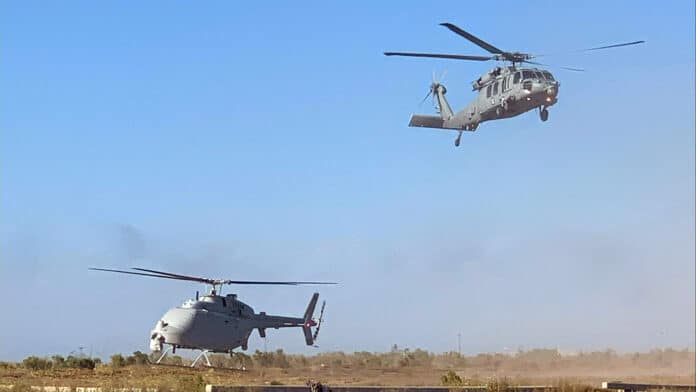The Navy’s MQ-8C Fire Scout unmanned helicopter recently supported an Expeditionary Advanced Base Operations (EABO) exercise off the coast of California, demonstrating its capability to transition from ship to shore in a maritime environment.
The MQ-8C Fire Scout participated in the Resolute Hunter exercise, held at the end of June. The unmanned helicopter flew a total of 23 hours during the exercise, proving the unmanned helicopter’s expeditionary use from land and across multiple ship classes. The Resolute Hunter is a joint and coalition large force exercise focused on training personnel on battle management, command and control, intelligence, surveillance, and reconnaissance.
The MQ-8C Fire Scout is powered by a Rolls-Royce 250-C47E engine that gives it a top speed of 160 mph (260 km/h). The unmanned helicopter can stay in the air for up to 15 hours. It is designed to provide reconnaissance, situational awareness, aerial fire support, and precision targeting support for ground, air, and sea forces.
“Fire Scout is the Navy’s only unmanned helicopter with the ability to deploy from a ship or land with ISR&T at the extended range required for future warfighting,” said Capt. Dennis Monagle, Fire Scout program manager. “The system is vital in expeditionary use for situational awareness and critical decision-making.”
During the exercise, Helicopter Sea Combat Squadron (HSC) 23 successfully launched MQ-8C Fire Scout from Point Mugu and completed a hand-off to the detachment’s Portable Mission Control Station (MCS-P) at San Clemente Island. The portable MCS-P ground control station helps Fire Scout bashing in austere locations on land, helipad operations in an advanced forward location, and logistics support from ship flight decks.
With the flexible MCS-P, Fire Scout has the ability to land on another ship or on an expeditionary shore site where a runaway is not feasible.
